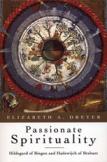Weird and Wonderful'
Something...happened to the mind of England between the time of Donne...and the time of Tennyson and Browning, wrote T. S. Eliot in his 1921 essay The Metaphysical Poets. This something was the dissociation of sensibility, from which we have never recovered. He meant the separation of thought and feeling evident in the two literary periods following the metaphysical poets. The neoclassical poets exalted reason over feeling; the romantics reacted by abandoning the rational for the sake of sentiment. They thought and felt by fits, unbalanced, lamented Eliot. By contrast, he believed the metaphysical poets harmonized thought and feeling in a holistic vision uniting all of life.
The 20th-century Jesuit Karl Rahner noted something similar about the pre-Vatican II theology of his day. Neoscholasticism, with its abstract, rational, unchanging truth, dominated the theology taught in seminaries and universities, while a more pastorally oriented kerygmatic theology was developed for preaching and catechesis. Rahner tried to repair the rift between academic theology and lived spirituality, creating a theology that was both intellectually sound and pastorally relevant. In the process, he advocated returning to the writings of the mystics to recover examples of a theology firmly rooted in people’s experience of God.
These thinkers were reacting against the post-Enlightenment legacy of the isolation of the rational from other aspects of human experience: the bodily, the sensual, the emotional, the affective, the passionate, the poetic, the imaginative, the erotic. Elizabeth Dreyer’s Passionate Spirituality is best understood in this context.
Dreyer, professor of religious studies at Fairfield University in Connecticut, first researched this material for the 1989 Madeleva Lecture given at St. Mary’s College in Notre Dame, Ind. Passionate Spirituality is a revised and expanded version, representing the author’s continued reflection on passion as one of the most important yet neglected aspects of spirituality.
Dreyer is convinced that Western modernity, together with certain negative aspects of the Christian tradition, has evoked in us a mistrust of expressions of deep passion, particularly with respect to our relationship with God, whom we prefer to keep at a safe distance from our emotional and sexual lives. At the same time, human passion, bodiliness and sexuality are rarely seen as having anything to do with personal holiness. Dreyer consults the writings of two medieval women mystics to discover the place of passion in their experience of God. In focusing on passion, however, she is careful not to ignore the balance provided by an equally important emphasis on reason. Thus, as Rahner suggested, she shows that we can learn from these women something about the unity between spirituality, understood as lived faith, and theology, its intellectual ordering.
Dreyer carefully chose as examples women who approached the harmony between reason and feeling in contrasting ways. Hildegard of Bingen, the 12th-century abbess and reformer, is undeniably a cerebral writer, while the 13th-century beguine Hadewijch of Brabant is the best proponent of erotic, emotion-filled love mysticism. Yet the author shows convincingly how Hildegard’s intellectual vision is suffused with passion, and how Hadewijch’s love poetry gives ample space to reason. Neither woman can be said to have thought and felt by fits, unbalanced. Both provide examples for contemporary folk interested in honoring passion as a vital element in their spiritual lives.
The other context within which Dreyer’s work belongs is the contemporary project of returning the neglected voices of women to Christian history. Chapter One outlines the methodological issues connected with this recovery. For those familiar with this area of scholarship, there is little new here, but those unfamiliar with it will benefit from its helpful introduction to the topic.
The book’s weak point is Chapter Two, in which Dreyer charts the history of passion in the Christian tradition. Handling so complicated a topic in so small a space inevitably leads to a lack of valuable nuance and the neglect of important figures and movements (where, for example, is Augustine?). Some issues foundational for understanding the chapters on Hildegard and Hadewijch may well be necessary, but the fragmented, somewhat rambling nature of this chapter left me feeling unsatisfied.
Since modern audiences inevitably find medieval women mystics to be both weird and wonderful, there is danger that their perceived weirdness might prevent any appreciation of how wonderful they are. Dreyer faces this issue squarely by naming some of their negative ideas and dangerous ascetical practices as unworthy of appropriation. Yet she also convinces us that their writings and example teach certain positive values relevant to our contemporary world. In the third and fourth chapters, which are the most engaging parts of the book, we meet two weird and wonderful women, and are motivated to learn more about them.
This article also appeared in print, under the headline “Weird and Wonderful',” in the August 1, 2005, issue.








